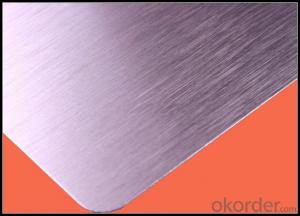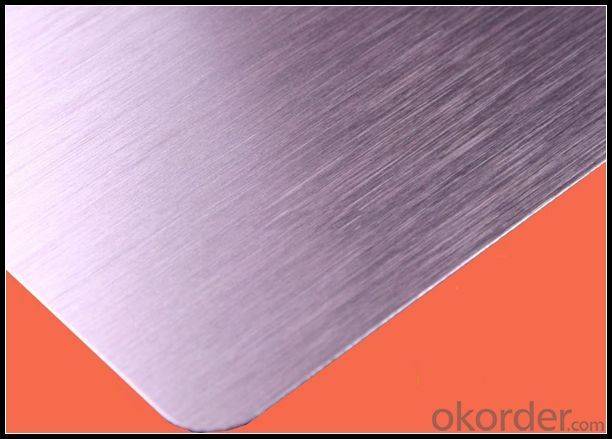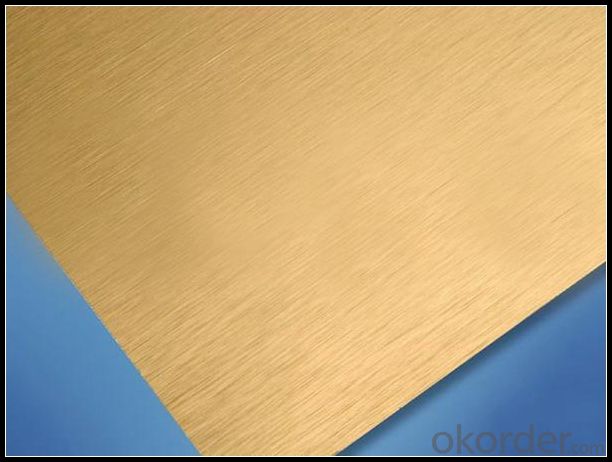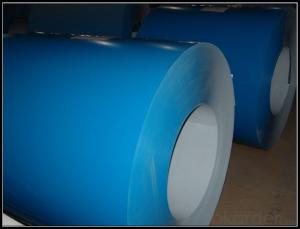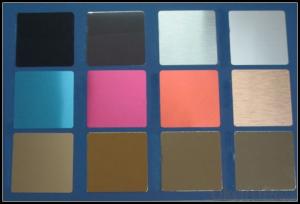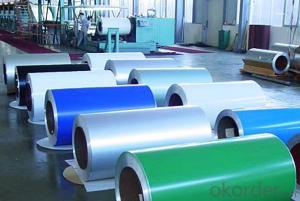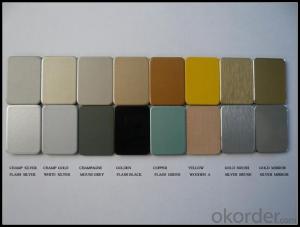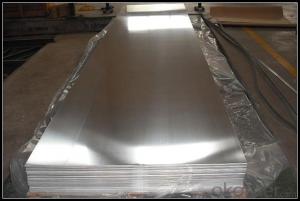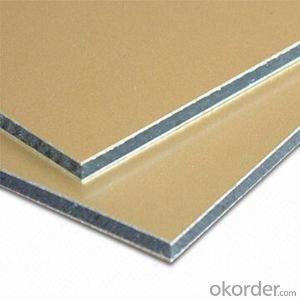Aluminum Mylar Sheets - PVDF Color Coating Aluminium Sheet Alloy 3003 for Building Curtain Walls
- Loading Port:
- Shanghai
- Payment Terms:
- TT OR LC
- Min Order Qty:
- 5 m.t.
- Supply Capability:
- 10000 m.t./month
OKorder Service Pledge
OKorder Financial Service
You Might Also Like
Specification
1. Specification of PVDF Color Coating Aluminium Sheet Alloy 3003 for Building Curtain Walls
ALLOY | AA1050 AA1060 AA1070 AA1100 ETC AA3003 AA3004 AA3005 AA3104 AA3105 ETC AA5005 AA5052 AA5083 AA5754 ETC AA8011 AA8006 AA8079 ETC |
TEMPER | H14,H16,H18,H22,H24,H26,H32,O/F |
THICKNESS | 0.03MM-3.0MM |
WIDTH | 30mm-1700mm |
COIL WGT | 2Mt - 3Mt |
COIL ID | φ508mm,φ610mm |
SURFACE | PE ,PVDF , EPOXY,16-25MICRON PAINTING THICK, MAX 40MICRONS |
STANDARD | GB/T 17748-1999 |
2. Application of PVDF Color Coating Aluminium Sheet Alloy 3003 for Building Curtain Walls
(1).Interior: wall cladding, ceilings, bathrooms, kitchens and balconies, shutters, doors...
(2).Exterior: wall cladding, facades, roofing, canopies, tunnels,column covers , renovations...
(3).Advertisement: display platforms, signboards, fascia, shop fronts...
3. Feature of PVDF Color Coating Aluminium Sheet Alloy 3003 for Building Curtain Walls
Surfact Quality :
Be free from Oil Stain, Dent, Inclusion, Scratches, Stain, Oxide Dicoloration, Breaks, Corrosion, Roll Marks, Dirt Streaks and other defect which will interfere with use,
Mechenical Property:
Chemical Composite and Mechanical Property
4. Certificate:
SGS and ROHS(if client request, paid by client), MTC(plant provided), Certificate of Origin(FORM A, FORM E, CO), Bureau Veritas and SGS (if client request, paid by client), CIQS certificate
5. Image of PVDF Color Coating Aluminium Sheet Alloy 3003 for Building Curtain Walls
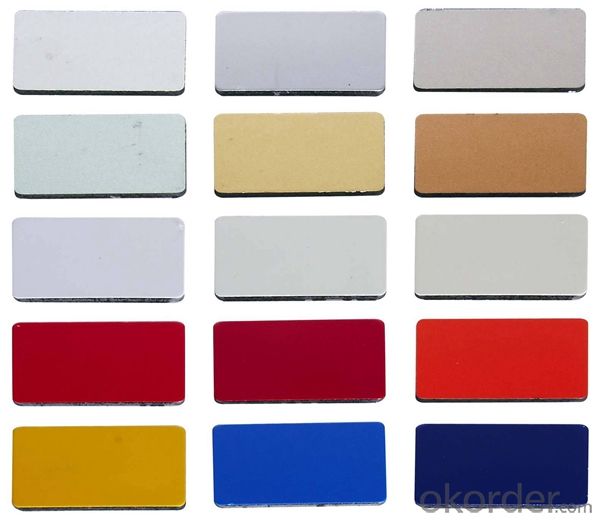
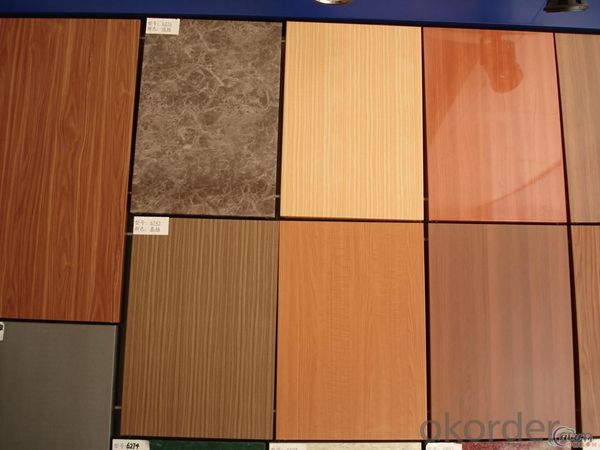
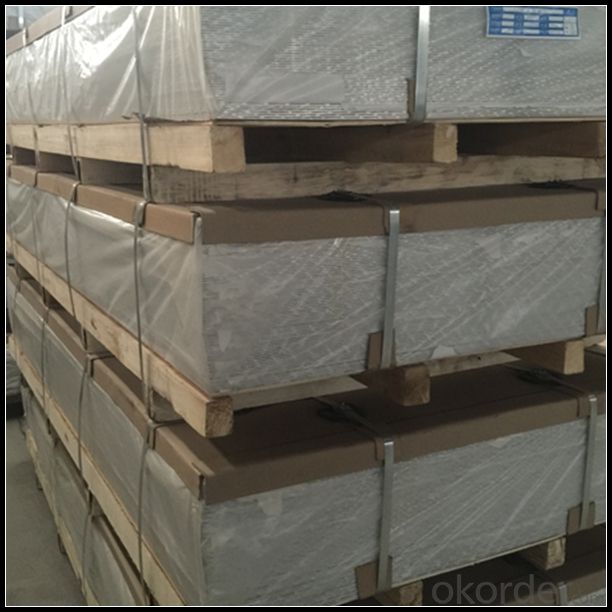
6. Package and shipping of PVDF Color Coating Aluminium Sheet Alloy 3003 for Building Curtain Walls
First, plastic cloth with drying agent inside; Second, Pearl Wool ; Third, wooden cases with dry agent , fumigation wooden pallets, aluminum surface could cover blue PVC film
7. FAQ
1) What is the delivery time?
Dpends on actual order, around 20 to 35 days
2)What is the QC system:
We have QC staff of 20 persons and advanced equipment, each production is with MTC traced from Aluminum ingot lot.
3) What market do you mainly sell to?
Australia, America, Asia, Middle East, Western Europe, Africa etc
- Q: What is the typical impact strength of aluminum sheets?
- The typical impact strength of aluminum sheets can vary depending on the alloy and temper of the material. However, in general, aluminum sheets have a relatively low impact strength compared to other metals. This is because aluminum is a lightweight material that is not as strong or durable as steel or other alloys. The impact strength of aluminum sheets is typically measured in terms of the energy required to cause the material to fracture or deform. This can be expressed in units such as joules or foot-pounds. While specific values may vary, aluminum sheets generally have an impact strength ranging from 10 to 40 joules or 7 to 30 foot-pounds. It is important to note that the impact strength can be influenced by factors such as thickness, surface condition, and the presence of any surface treatments or coatings. Therefore, it is recommended to consult the manufacturer's specifications or conduct specific tests to determine the impact strength of a particular aluminum sheet.
- Q: Can 101 aluminum sheets be used in the production of consumer electronics?
- Indeed, consumer electronics production can indeed benefit from the usage of 101 aluminum sheets. Aluminum, being a versatile and lightweight material, finds wide application in the manufacturing of various electronic devices like smartphones, laptops, tablets, and other consumer electronic products. It boasts exceptional properties such as excellent thermal conductivity, corrosion resistance, and electrical conductivity, thus rendering it highly suitable for electronics. It is worth noting that the particular grade of aluminum, such as 101, may possess distinct characteristics that cater to diverse applications. However, in the absence of further information regarding the specific requirements of the consumer electronics being fabricated, it becomes challenging to ascertain whether 101 aluminum sheets are the optimal choice.
- Q: Are aluminum sheets affected by UV radiation or sunlight exposure?
- Yes, aluminum sheets are affected by UV radiation and sunlight exposure. Over time, exposure to UV radiation and sunlight can cause the aluminum sheets to oxidize, resulting in a dull and discolored appearance. Additionally, prolonged exposure to UV rays can weaken the material, making it more prone to cracking or breaking. To protect aluminum sheets from the damaging effects of UV radiation, it is recommended to apply a protective coating or use anodized aluminum, which has a more robust and durable surface.
- Q: Can aluminum sheets be an alternative to glass in certain applications?
- Yes, aluminum sheets can be an alternative to glass in certain applications. Aluminum sheets offer several advantages over glass, making them a suitable choice in specific scenarios. Firstly, aluminum sheets are lightweight and durable, making them ideal for applications where weight is a concern, such as in aerospace or automotive industries. Glass, on the other hand, is relatively heavy and brittle, which can limit its use in certain environments. Additionally, aluminum sheets have excellent corrosion resistance, making them suitable for applications in marine or coastal environments where glass may deteriorate over time due to exposure to saltwater. Aluminum sheets also have a high strength-to-weight ratio, allowing for greater design flexibility and structural integrity compared to glass. Moreover, aluminum sheets can provide better thermal insulation properties compared to glass. They offer improved heat transfer resistance, which can be advantageous in applications where temperature control is crucial, such as in the construction industry. Furthermore, aluminum sheets can be more cost-effective than glass in certain applications. The production and installation costs of aluminum sheets are often lower compared to glass, making them a more economical choice for large-scale projects. However, it is important to note that glass still has its own unique properties and advantages that make it the preferred choice in many applications, such as its transparency and optical clarity. Glass also offers better resistance to scratches and chemical corrosion compared to aluminum sheets. In conclusion, while aluminum sheets can be a viable alternative to glass in certain applications due to their lightweight, durability, corrosion resistance, thermal insulation properties, and cost-effectiveness, the choice between the two materials ultimately depends on the specific requirements and constraints of the application in question.
- Q: It is a club aluminium dutch oven from the 50's. It is discolored on the interior and has baked on dirt on the exterior. The exterior has a textured surface which makes cleaning more difficult. I tried baking soda and water paste, but it did not budge it!
- I have an aluminum double boiler.. that I only used for making pie pudding and yes, it got yucky. I found something and I cleaned it and i was so proud of myself but that was a while ago and it am racking my brain to remember. If I recall, I'll try to get back to you and let you know, but for now, I think it was the using CLR cleaner. Good luck. And if they say not to use it... I'd say it was time to update. Clean it... for display or sale to collectors.
- Q: What are the different types of surface treatments available for architectural aluminum sheets?
- Architectural aluminum sheets come with a variety of surface treatments that serve to improve their appearance, durability, and performance. These treatments make the aluminum suitable for a wide range of architectural applications. One commonly used surface treatment is anodizing. This process entails immersing the aluminum sheet in an electrolytic solution and applying an electric current to create a protective oxide layer on its surface. This oxide layer can be dyed to achieve the desired color or left clear to maintain a natural metallic appearance. Anodized aluminum sheets are highly regarded for their excellent resistance to corrosion, scratches, and color fading. Another surface treatment option is powder coating. In this method, a dry powder is electrostatically applied to the aluminum sheet and then cured in an oven. The powder melts and fuses to the surface, resulting in a smooth and durable finish. Powder coating offers exceptional color retention, weather resistance, and resistance to chipping and cracking. A third type of surface treatment is PVDF coating, which involves applying a high-performance fluoropolymer resin called polyvinylidene fluoride to the aluminum sheet through a coil coating process. PVDF coatings are known for their exceptional resistance to fading, chalking, and chemical attack, making them perfect for exterior applications where color retention and durability are crucial. Additionally, there are various mechanical surface treatments available for architectural aluminum sheets. These treatments, such as brushing or polishing, can be employed to achieve the desired texture or reflectivity on the surface. Mechanical treatments allow for the creation of brushed, satin, or mirror-like finishes, adding aesthetic appeal to the aluminum sheet. To summarize, architectural aluminum sheets can be treated using anodizing, powder coating, PVDF coating, or mechanical treatments. Each treatment offers unique advantages and characteristics, enabling architects and designers to select the most suitable option for their specific project requirements.
- Q: This question asks if aluminum sheets can be recycled repeatedly without losing their quality.
- <p>Yes, aluminum sheets can be recycled multiple times without losing their quality. Aluminum is a highly recyclable material, and the recycling process does not degrade the material's properties. In fact, recycled aluminum requires significantly less energy to produce compared to mining and refining new aluminum from bauxite ore. This makes aluminum recycling an environmentally friendly and cost-effective process, contributing to sustainability and reducing the demand for raw materials.</p>
- Q: What are the maximum dimensions of aluminum sheets?
- The maximum dimensions of aluminum sheets can vary depending on the specific manufacturing capabilities and requirements. However, commonly available aluminum sheets often have a maximum width of around 72 inches (6 feet) and a maximum length of approximately 240 inches (20 feet).
- Q: This question asks if aluminum sheets are suitable for outdoor use in environments with high temperatures.
- <p>Yes, aluminum sheets can be used for outdoor applications even in high temperatures. Aluminum has a high melting point of around 660掳C (1220掳F), making it resistant to heat. It also has good thermal conductivity, which allows it to dissipate heat quickly. However, it's important to note that prolonged exposure to high temperatures can cause aluminum to expand and potentially warp. For outdoor applications, especially in high-temperature environments, it's recommended to use aluminum alloys designed for such conditions to ensure durability and performance.</p>
- Q: What are the safety precautions when working with aluminum sheet?
- To ensure your well-being and reduce the likelihood of accidents or injuries, it is essential to observe specific safety measures when working with aluminum sheet. Consider the following precautions: 1. Personal Protective Equipment (PPE): Safeguard yourself against potential hazards by wearing appropriate PPE, such as safety glasses, gloves, and a long-sleeved shirt. Aluminum shavings can cause injuries if they come into contact with your skin due to their sharpness. 2. Ventilation: Work in a well-ventilated area or employ local exhaust ventilation systems to prevent the accumulation of fumes and dust. Inhalation of large quantities of aluminum dust or fumes can be harmful. 3. Fire safety: As aluminum is highly flammable, it is crucial to keep flammable materials away from the work area. Ensure you have a fire extinguisher readily available and know how to use it in case of emergencies. 4. Tool safety: Verify that all tools and equipment used for cutting, bending, or shaping aluminum are in good working condition. Accidents are more likely to occur with dull or damaged tools. Follow proper tool handling techniques and avoid using excessive force to minimize the risk of injuries. 5. Proper handling: When moving or lifting aluminum sheets, employ correct lifting techniques and seek assistance if needed. Improper handling can lead to strains or muscle injuries due to the weight of the sheets. 6. Electrical safety: If electrical tools or equipment are utilized, make sure they are properly grounded and in good working order. Avoid using damaged or frayed cords and keep them away from moisture sources. 7. Storage: Store aluminum sheets in a designated area, away from heat sources or flammable materials. Stack and secure the sheets properly to prevent accidents caused by falling objects. 8. First Aid: Keep a first aid kit readily available to address minor injuries. Familiarize yourself with appropriate first aid procedures for cuts, burns, or any other potential injuries that may occur while working with aluminum sheets. By adhering to these safety precautions, you can establish a safe working environment and minimize the risks associated with handling aluminum sheets. Remember to prioritize your safety and the safety of those around you at all times.
Send your message to us
Aluminum Mylar Sheets - PVDF Color Coating Aluminium Sheet Alloy 3003 for Building Curtain Walls
- Loading Port:
- Shanghai
- Payment Terms:
- TT OR LC
- Min Order Qty:
- 5 m.t.
- Supply Capability:
- 10000 m.t./month
OKorder Service Pledge
OKorder Financial Service
Similar products
Hot products
Hot Searches
Related keywords
